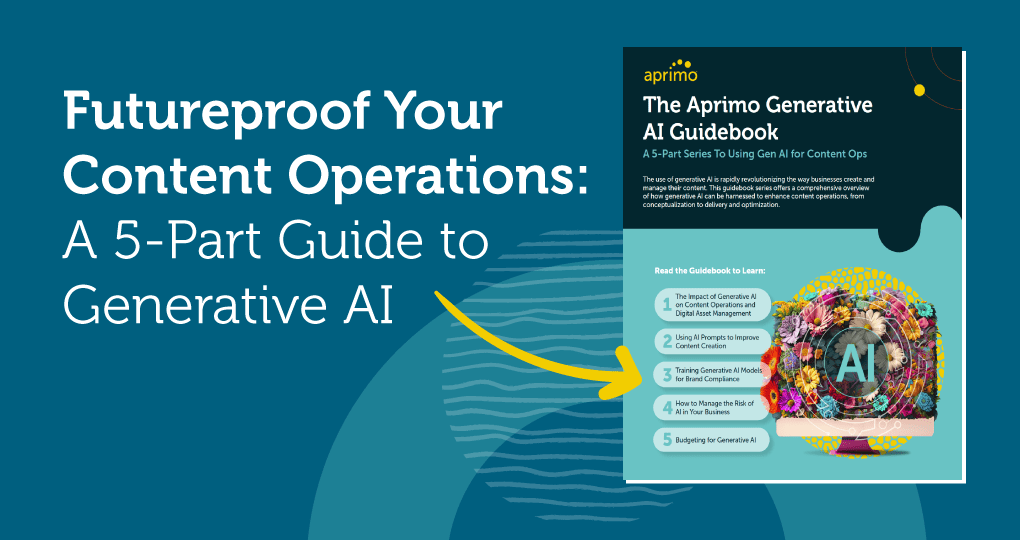The Democratization of DAM: Empowering Every User to Be a Content Master

Content management operations have been traditionally managed by subject matter experts and specialists. While this ensures a high level of quality in content delivery, fast-paced business environments can often benefit from greater levels of collaboration between experts and non-experts within an organization. Let’s take a closer look at the many ways that the democratization of digital asset management (DAM) leads to benefits for individual users, teams, and organizations alike.

Democratization of DAM: Revolutionizing Digital Asset Management
A digital asset management system is a centralized platform that allows companies to organize, store, and distribute their digital assets. It’s an efficient way to work with large databases of digital content and allows teams to collaborate more effectively.
Any type of media files can be incorporated into DAM, including:
-
Images
-
Videos
-
Documents
-
Audio files
-
Media files
-
Graphics
-
Presentations
-
Digital media like AI-generated images or videos
One of the most transformative aspects of the evolution of DAM is the way it has democratized the digital asset management process. By allowing non-specialists to view and edit content via permission-based access controls, it speeds up the retrieval and publishing workflows and leads to productivity gains across the board.
Breaking Down Barriers: Accessibility for All Users
In the past, asset libraries were difficult to manage due to their large storage requirements and time-consuming cataloging procedures. Unless meticulous workflows were followed when organizing digital files, it was easy for databases to quickly become cluttered and confusing.
In addition, siloed management systems reduce the opportunities for non-specialists to contribute to knowledge sharing and content dissemination. These systems are often only accessible to subject matter experts (SMEs) who must be consulted before accessing or editing content.
Cloud-based digital asset management systems solve these problems by seamlessly connecting multiple levels of users with existing tools and platforms so that manual, error-prone workflows are eliminated. Today, this is easier than ever due to DAM integration within a wide network of devices, systems, and platforms.
Furthermore, by eliminating the need for direct meetings with SMEs, any user with permission can retrieve and edit files, enabling workflows that are inclusive of specialists and non-specialists alike.
But the benefits don’t stop at the organizational level. A DAM system can also improve accessibility for end users and general audiences by improving the way content is tagged and published. For example, DAM contributes to accessibility by:
-
Improving metadata collection and tagging
-
Allowing assistive technology to better understand and describe content such as images, videos, or other media on digital platforms
-
Helping users with disabilities such as visual impairment to navigate to more accessible versions of content through metadata tagging


User-Centric Design: Creating a Seamless Experience
The democratization of DAM is something that ultimately benefits the users of the system. By approaching digital asset management from the user’s perspective, digital asset management software has become an indispensable feature of commercial content operations.
In practical terms, some of the benefits of user-centric design in DAM software include:
-
Faster retrieval and publishing workflows, leading to increased productivity
-
Empowerment of non-specialists to contribute to content management and dissemination
-
Streamlined review cycles that leverage existing content and maintain brand consistency
-
Greater creativity among users through democratization of content management
-
Quantifiable improvements in time and resource management
-
More inclusivity for the diverse needs of all users in an organization
-
Enhanced collaboration with clients due to streamlined content sharing and publishing processes
Aprimo’s approach to DAM ensures a seamless user experience by integrating with existing tools that users are already familiar with. Take the National Park Foundation (NPF) for example.
Managing content for over 400 national park sites across the country is no easy task. However, Aprimo’s QuickConnect functionality fully integrated DAM with the NPF’s existing content management system, allowing them to work faster, reduce duplication, and improve their delivery of compelling content.
Empowering Creativity: Unleashing the Content Master Within
Not only does democratized DAM optimize workflows, it can also increase the confidence and experience levels of non-specialists as they become more familiar with content management.
For example, Airbnb established an internal “Data University” that trained all employees about data collection, management, and utilization based on their experience level. This allowed for a greater level of cross-team collaboration as the overall standard of data literacy improved within the organization.
Any content team can strive for similar results by engaging in the democratization of their DAM. Delegating tasks and roles to users of different experience levels can foster creativity and facilitate content mastery.
Here are two simple examples of DAM features that empower creativity:
Dynamic Assets
Assets can be quickly cropped, trimmed, and filtered to optimize the content according to format or publishing platform. Non-designers can easily use this tool and gain greater ownership of the content publishing process.
Omnichannel Consistency
The use of up-to-date content versions helps maintain brand voice and consistency throughout all publishing channels. Users who may not be the original content creators or who don’t specialize in writing or design can remain consistent with content guidelines.


Maximizing Efficiency: Streamlining Workflows with Democratized DAM
Streamlining workflows with democratized DAM leads to quantifiable improvements in time and resource management. By increasing file management access for content owners, editors, and publishers, the workload is more evenly spread out and users can work on different tasks simultaneously.
Here are some of the features that help maximize efficiency through democratized DAM:
-
Ecosystem connectivity allows access to digital assets while working within your preferred CMS, PIM, or email solutions
-
Powerful search and filtering functions allow access to an entire library of assets directly from your web browser
-
Aprimo QuickConnect enables speedy setup as easy as installing a browser extension
-
Version control and secure access reduce the time needed to manage user permission and file sharing
-
Reduced physical storage streamlines the digital workflow and saves money
-
Data recovery helps preserve data loss that can be disastrous for workflow efficiency
-
Content optimization through embedded campaign codes in asset links allows you to better track campaign performance
Overcoming Challenges: Addressing Concerns in Democratization
Here are some potential concerns that some organizations may have about democratizing DAM, and how to address them.
Loss of Control
This concern is easily addressed by implementing robust permission controls and access management systems that only allow authorized user access.
Security Risks
Democratized DAM should still follow security best practices such as encryption, user authentication, and regular security audits to maintain asset integrity and confidentiality.
Integration Challenges
Look for a DAM platform that is compatible with your existing technology infrastructure and ecosystem.
Resistance to Change
While it can be daunting to switch to a new method of file management, training and education about the substantial benefits of democratized DAM should address these concerns and misconceptions.
Lack of Specialized Knowledge
Democratization doesn’t necessarily lead to a lack of specialization, it simply improves the level of collaboration and accessibility that is possible. Content management specialists still play an important role in training and leading non-specialists in DAM best practices.





